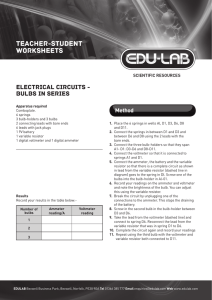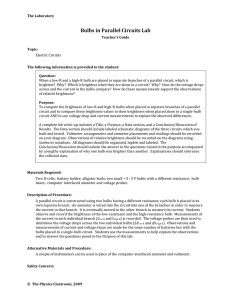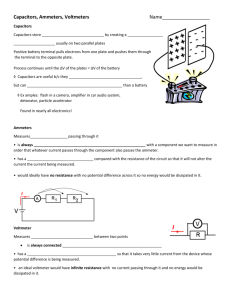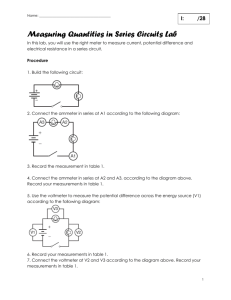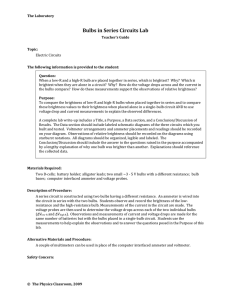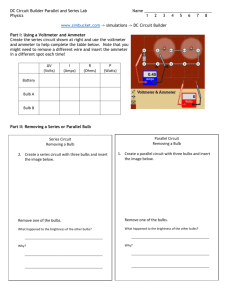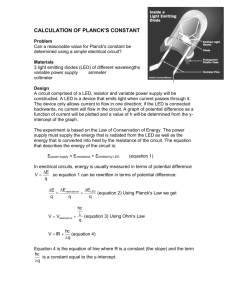Brightness
advertisement
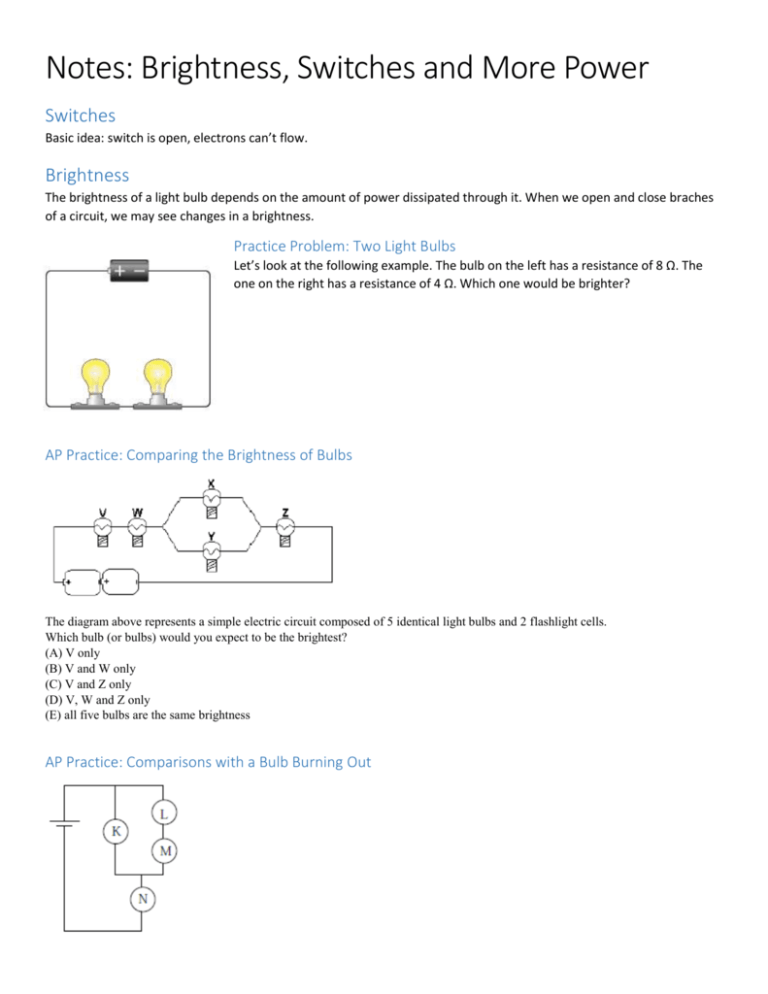
Notes: Brightness, Switches and More Power Switches Basic idea: switch is open, electrons can’t flow. Brightness The brightness of a light bulb depends on the amount of power dissipated through it. When we open and close braches of a circuit, we may see changes in a brightness. Practice Problem: Two Light Bulbs Let’s look at the following example. The bulb on the left has a resistance of 8 Ω. The one on the right has a resistance of 4 Ω. Which one would be brighter? AP Practice: Comparing the Brightness of Bulbs The diagram above represents a simple electric circuit composed of 5 identical light bulbs and 2 flashlight cells. Which bulb (or bulbs) would you expect to be the brightest? (A) V only (B) V and W only (C) V and Z only (D) V, W and Z only (E) all five bulbs are the same brightness AP Practice: Comparisons with a Bulb Burning Out Four identical light bulbs K, L, M, and N are connected in the electrical circuit shown above. Returning to Power Let’s talk a little more about power. Practice Problem A power station delivers 7000kW using 110 kV. If the wires have a total of 80Ω, how much power is wasted to the wires in the delivery process? Kilowatt Hours Electricity bills come with kWh on them. Let’s break this down so we know what it means. Ammeters We use ammeters to measure the current through a particular part of a circuit. How do you think an ammeter needs to be hooked up? In series or in parallel? We want the ammeter to disturb the circuit as little as possible. Therefore, does it make sense for the ammeter to have a very high or very low resistance? An ideal ammeter would therefore have a resistance of . AP Practice Problem An ideal battery, an ideal ammeter, a switch and three resistors are connected as shown. With the switch open as shown in the diagram the ammeter reads 2.0 amperes. With the switch open, what would be the potential difference across the 15 ohm resistor? (A) 30 V (B) 40 V (C) 60 V (D) 70 V (E) 110V With the switch open, what must be the voltage supplied by the battery? (A) 30 V (B) 40 V (C) 60 V (D) 70 V (E) 110 V When the switch is closed, what would be the current in the circuit? (A) 1.1 A (B) 1.7 A (C) 2.0 A (D) 2.3 A (E) 3.0 A Voltmeter How do you think a voltmeter needs to be hooked up? In series or in parallel? We want the voltmenter to disturb the circuit as little as possible. Therefore, does it make sense for the voltmeter to have a very high or very low resistance? An ideal voltmeter would therefore have a resistance of .


